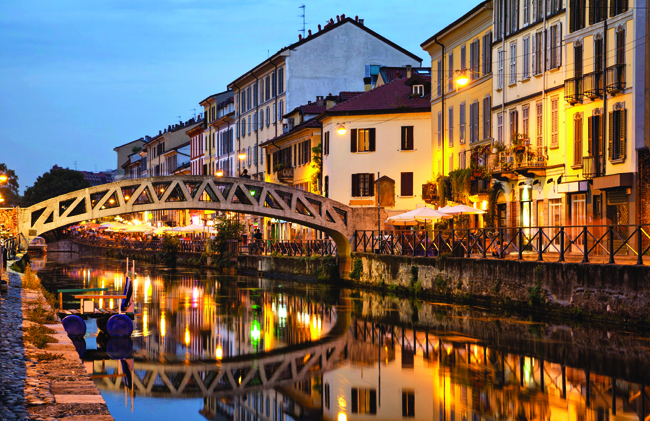A summer night’s dusk falls on the Grand Canal in Milan and the cafés that line the waterside prepare themselves for another evening’s brisk trade, but it wasn’t always so peaceful…

Today, this is just a beautiful place to be, but these waterways were once the very arteries of Milan, carrying the city’s lifeblood around its body. Today, Milanese will walk, drive, or take the bus to the Naviglio Grande for an aperitivo after work; in times gone by, many of them would have been spending their days on boats on the canal, transporting goods around the city – and there wouldn’t have been any nice cafés for them to stop at for a sundowner either…
Unusually for a large European city, Milan has no river. It is connected to the Po Valley river system by a series of canals, of which the Naviglio Grande (you will not be surprised to hear) is the most important. This canal connects the city to the River Ticino, which skirts the west of the city as it descends from Lake Maggiore to the Po. And it was along this route that the building materials for the Duomo, notably marble from Lake Maggiore, were brought into the city.
